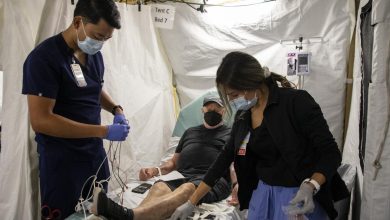Guidance on Inflation Reduction Act’s Medicare Prescription Payment Plan Released

CMS published new guidelines last week pertaining to outreach and education for the Medicare Prescription Payment Plan (MPPP). The MPPP, often known as “smoothing,” was created by the Inflation Reduction Act (IRA) and gives Medicare Part D beneficiaries the option to choose a different cost-sharing plan for their covered Part D prescription drugs.
Starting in 2025, those with Part D plans registered will have the choice to pay for their prescription drugs directly at the pharmacy counter, or to spread out their out-of-pocket expenses over the course of the year. It is important to remember that the program just moves a person’s Part D cost-sharing obligations—it does not increase or decrease them. This program kicks off concurrently with other IRA Part D restructuring changes, the most significant of which is the implementation of a $2,000 out-of-pocket cap.
When an individual chooses to participate in the MPPP, their plan will notify their preferred pharmacy as part of the payment transaction, as per the guidelines provided by the IRA and CMS. The person won’t be billed at the point of sale. Rather, the plan will reimburse the beneficiary’s cost-sharing requirement to the pharmacy, which may be a deductible, coinsurance, or copay, depending on the specifics of their plan. The beneficiary will then receive a monthly fee from the plan based on a calculation specified in the IRA statute. Enrollees’ path through the Part D benefit, the amount that goes towards their deductible, or their $2,000 out-of-pocket maximum remain unchanged if they choose to participate in the program.
The suitability of the MPPP for a given recipient will vary depending on their unique situation and preferences. According to CMS’s most recent guidance, plans must identify and reach out to people who are most likely to benefit from the program: those who spent $2,000 on Part D cost-sharing between January 1 and September 30, 2024, and those who will pay $600 or more out-of-pocket for a single prescription in 2025. A few instances of recipients who are unlikely to gain from the MPPP are also included in the guidelines. For instance, under the MPPP, there may be a less equitable cost distribution with larger bills in the later months of the year for individuals with relatively low or consistent Part D cost-sharing throughout the plan year as well as those who are unlikely to hit the $2,000 cap. This is because of the compounding effect of monthly MPPP billing and prescription medication prices. The guidelines also require plan outreach to focus on pre-plan year and early month education, noting that participants are unlikely to receive major benefits from enrolling into the program late in the year as their expenses could only be spread over the remaining calendar months.
Additionally, CMS published an MPPP timetable and model materials. You can find this and earlier guidelines under the “Part D Improvements” category on the CMS page dedicated to the Inflation Reduction Act. CMS also revealed plans for trainings for SHIPs and other partners to occur this summer and early fall, as well as a cost preview tool that includes the MPPP as an option for Medicare Plan Finder users.
Read more about the MPPP here, including the most recent guidance, here.




